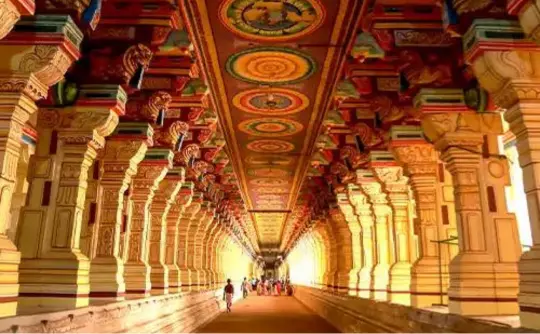Blogs
Rameshwaram Mandir
Nestled on the serene shores of the southern tip of India lies a place where spirituality merges seamlessly with natural beauty – the Rameshwaram Mandir. In this blog, we embark on a journey to explore the rich history, cultural significance, and spiritual allure of this sacred temple.

Rameshwaram Mandir is one of the holiest pilgrimage sites in India. It is believed that a pilgrimage to this sacred temple absolves one of sins and grants liberation (moksha) from the cycle of birth and death.
Historical Roots
Steeped in mythology and legend, Rameshwaram Mandir holds a special place in Hindu tradition. According to ancient texts, it is believed to be the place where Lord Rama, accompanied by Lord Hanuman and his army of monkeys, built a bridge of floating stones to Lanka to rescue his beloved wife Sita from the clutches of the demon king Ravana. This divine intervention, immortalized in the epic Ramayana, lends Rameshwaram Mandir its sacred aura and historical importance.
Architectural Marvel
The temple’s architecture is a testament to the ingenuity of ancient craftsmen. Built in the Dravidian style of architecture, it boasts towering gopurams (entrance towers), intricately carved pillars, and ornate sculptures depicting scenes from Hindu mythology. The temple’s sanctum sanctorum houses the sacred lingam (an abstract representation of Lord Shiva), attracting devotees from far and wide who seek blessings and spiritual solace.
Spiritual Significance
For devout Hindus, Rameshwaram Mandir is one of the holiest pilgrimage sites in India. It is believed that a pilgrimage to this sacred temple absolves one of sins and grants liberation (moksha) from the cycle of birth and death. The temple’s location, surrounded by the pristine waters of the Indian Ocean, adds to its spiritual allure, evoking a sense of tranquility and reverence in the hearts of pilgrims.
Cultural Legacy
Over the centuries, Rameshwaram Mandir has served as a melting pot of diverse cultures and traditions, attracting pilgrims from across the Indian subcontinent and beyond. Its annual festivals and rituals, including the Mahashivratri and Navratri celebrations, are vibrant spectacles of devotion and devotion, showcasing the rich tapestry of India’s spiritual heritage.


